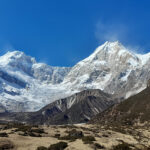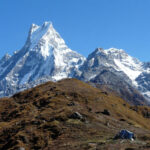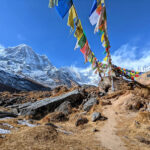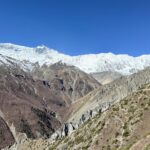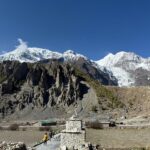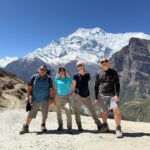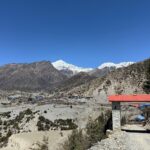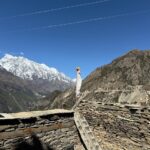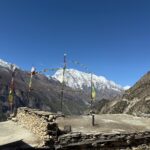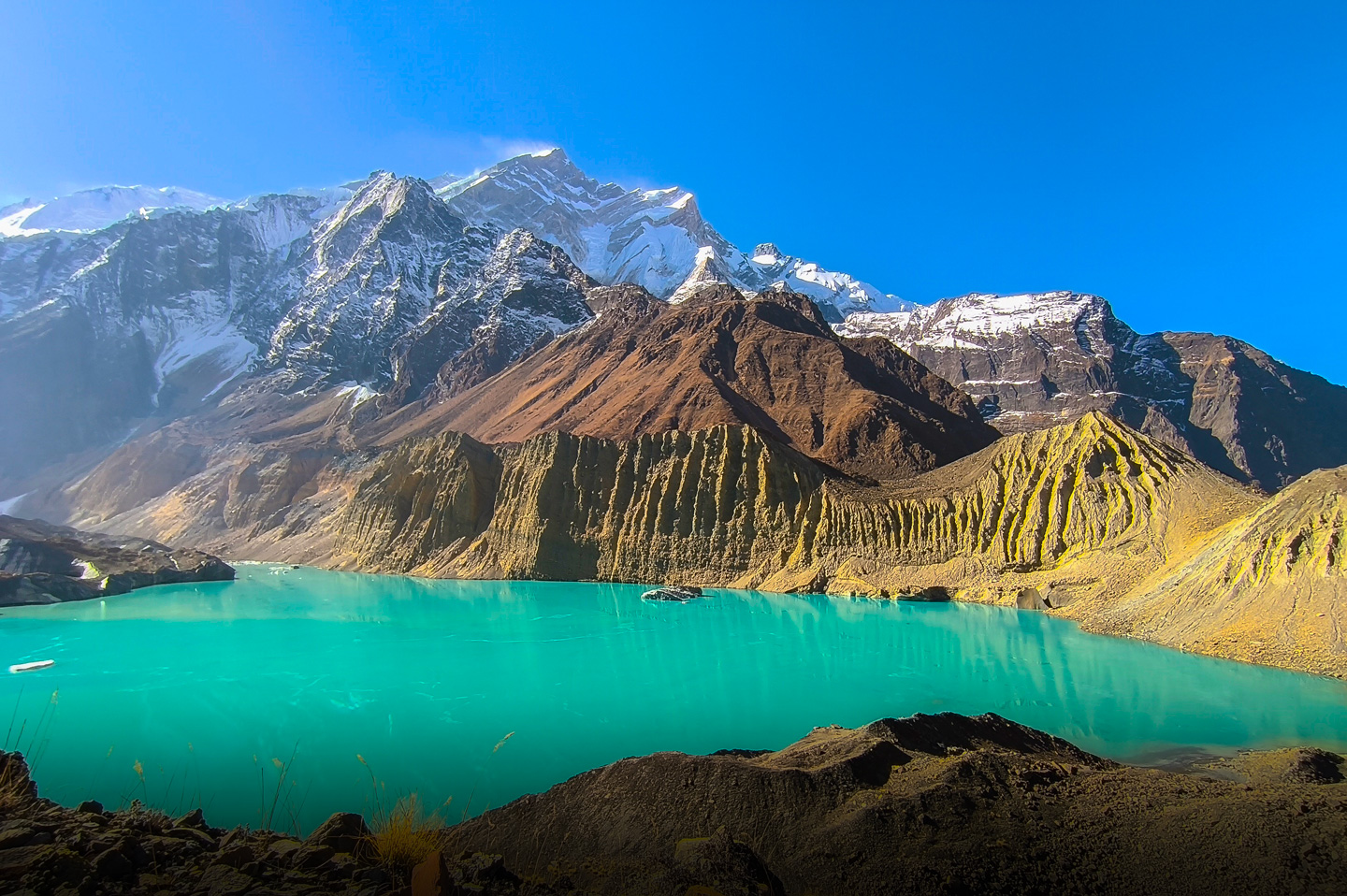
Annapurna North Base Camp Trek
The Annapurna North Base Camp Trek—also known as the Maurice Herzog Trail—is an off-the-beaten-path trekking experience in Nepal that combines breathtaking mountain vistas, pristine alpine lakes, cascading waterfalls, and rich cultural heritage. Set in the shadows of Annapurna I (8,091 m), the world’s tenth-highest peak, this relatively new route offers a quieter, more intimate connection with nature compared to the more commercialized southern base camp routes.
If you’re seeking a peaceful, raw, and immersive Himalayan experience for your 2025 or 2026 trekking plans, the Annapurna North Base Camp (ANBC) deserves your attention.
A Journey Through History and Solitude
Unlike the South Annapurna Base Camp Trek that attracts thousands of trekkers annually, the North Base Camp trail remains relatively unknown to global adventurers. Yet, it holds profound historical significance. In 1950, French mountaineers Maurice Herzog and Louis Lachenal became the first humans to summit an 8,000-meter peak when they conquered Annapurna I. They achieved this feat via the same path that now forms the Annapurna North Base Camp trail, giving rise to its alternative name, the Maurice Herzog Trail.
Despite this historical relevance, it wasn’t until 2023 that the route gained attention as a trekking destination. While it is still not officially open as of this writing, a grand opening ceremony is scheduled for June 3, 2025, with the participation of Nepal’s Prime Minister and Herzog’s family.
Scenic Highlights and Natural Wonders
The trail lies in the Myagdi district of Gandaki Province in western Nepal. Trekkers are rewarded with ever-changing landscapes as they ascend, beginning with dense forested areas and eventually transitioning to high alpine zones. Some of the most captivating attractions on the route include:
-
Miristi River: A constant companion throughout the trek, offering serenity and soundtrack to your journey.
-
Phutphute Waterfall: A magnificent cascade that provides a perfect photo opportunity on your first trekking day.
-
Panoramic Views: Dazzling vistas of Annapurna I, Tilicho Peak (7,135 m), and Nilgiri North (7,061 m).
-
Panchakunda Lake (4,050 m): Located just below the base camp, this alpine lake adds a rare aquatic crown to your Himalayan adventure.
-
Cultural Encounters: Interactions with the warm-hearted Magar community, particularly the Pun sub-caste, offer a glimpse into the traditions and hospitality of Nepal’s hill tribes.
Trekking Itinerary and Elevation Details
The Annapurna North Base Camp trek spans a relatively short duration of 4–5 days, making it accessible to both seasoned and aspiring trekkers.
Brief Itinerary
-
Day 1: Drive from Kathmandu to Hum Khola (2,890 m) via Pokhara and Tatopani, then trek to Guphaphant (3,250 m)
-
Day 2: Trek from Guphaphant to Panchakunda Lake (4,050 m)
-
Day 3: Morning hike to Annapurna North Base Camp (4,190 m) and descend back to Hum Khola
-
Day 4: Drive from Hum Khola to Pokhara
-
Day 5: Return to Kathmandu
The trek begins at an altitude of 2,890 m and reaches a maximum elevation of 4,190 m, offering an immersive high-altitude experience without the excessive physical strain found in longer Himalayan expeditions.
Difficulty and Safety Considerations
Classified as a moderate trek, the route doesn’t require technical climbing skills. However, the first day involves a steep ascent from Hum Khola to Guphaphant, which may be physically demanding for some. A reasonable level of fitness and some pre-trek conditioning will go a long way in making the journey enjoyable.
Altitude Sickness Awareness
Despite the modest elevation, altitude sickness remains a potential risk—especially above 3,000 m. Common symptoms include headaches, nausea, and insomnia. If left untreated, conditions like High Altitude Pulmonary Edema (HAPE) and High Altitude Cerebral Edema (HACE) can become life-threatening.
Prevention Tips:
-
Walk slowly and ascend gradually
-
Take frequent rest breaks
-
Hydrate with 3–4 litres of water per day
-
Avoid alcohol and smoking
-
Eat carbohydrate-rich meals
-
Consider taking Diamox with medical advice
-
Consume natural remedies like garlic soup with Timur (Sichuan pepper)
Accommodation and Amenities
Accommodation along the trail is currently limited to community-run tent hotels—basic but sufficient shelters that offer warm meals and friendly hospitality. While they lack modern conveniences like electricity or Wi-Fi, these tent lodges reflect the pioneering spirit of trekking in unexplored terrain.
Just two months into operation, these facilities mark the beginning of sustainable tourism in the region. Previously, trekkers had to carry their own tents, stoves, and provisions. Now, you can enjoy organic food and a safe resting place after each day’s hike without hauling heavy gear.
Best Time to Trek: Spring and Autumn
The ideal seasons for the Annapurna North Base Camp Trek are spring (March to May) and autumn (September to November). Here’s why:
Spring Highlights:
-
Clear skies and warm days
-
Blooming rhododendron forests
-
Celebrations like Holi, Buddha Jayanti, and Nepalese New Year
Autumn Highlights:
-
Crisp post-monsoon air and clear mountain views
-
Comfortable trekking conditions
-
Festivals such as Dashain and Tihar
In spring 2024, trekkers reported some afternoon rainfall and light snowfall, yet the conditions remained enjoyable and safe—further proving the seasonal reliability of this trek.
Permits and Regulations
Currently, there are no permit checkpoints along the Maurice Herzog Trail, but this will likely change after the official opening in 2025. In the future, trekkers will need:
-
Annapurna Conservation Area Permit (ACAP)
-
Trekkers’ Information Management System (TIMS) Card
These permits help preserve the ecosystem, maintain the trail, support local communities, and monitor tourist activity for safety purposes.
Nepalese law also mandates that international trekkers be accompanied by a licensed guide or travel through a registered agency. Local tour operators like Getaway Nepal Adventure offer complete packages—including permits, guides, transportation, and accommodations—making your trek hassle-free.
Final Thoughts
The Annapurna North Base Camp Trek is a raw, enriching, and rewarding Himalayan experience for those looking to step off the well-worn path. With its historical roots, scenic landscapes, and emerging infrastructure, it offers a compelling mix of challenge and tranquility. Whether you’re a seasoned trekker or a passionate explorer eager to try something new, this trail will leave you with lasting memories—and perhaps, a deeper connection to the roots of Himalayan mountaineering.
So, if you’re planning your next adventure in 2025 or 2026, don’t follow the crowd. Head north—toward serenity, toward legacy, toward Annapurna.

